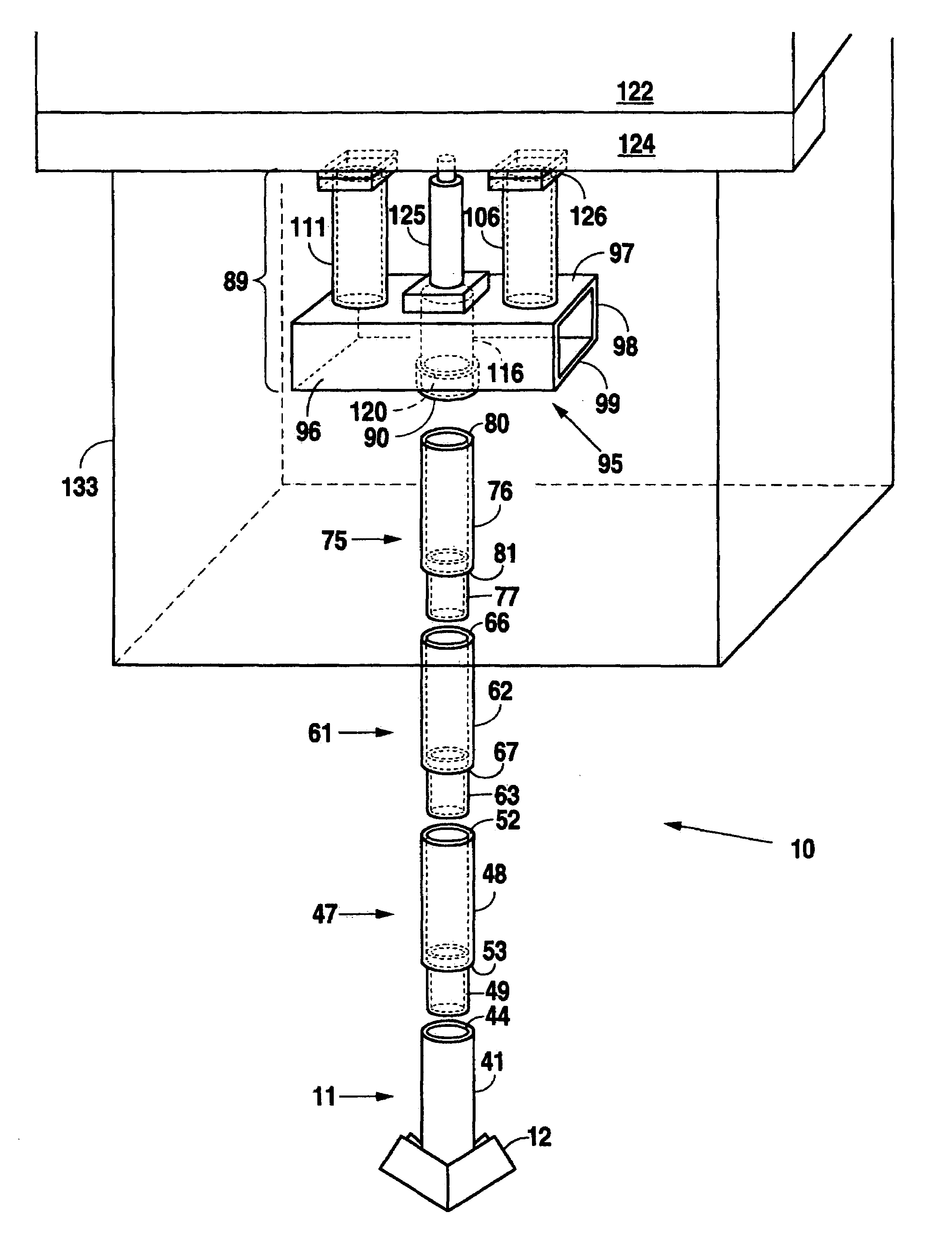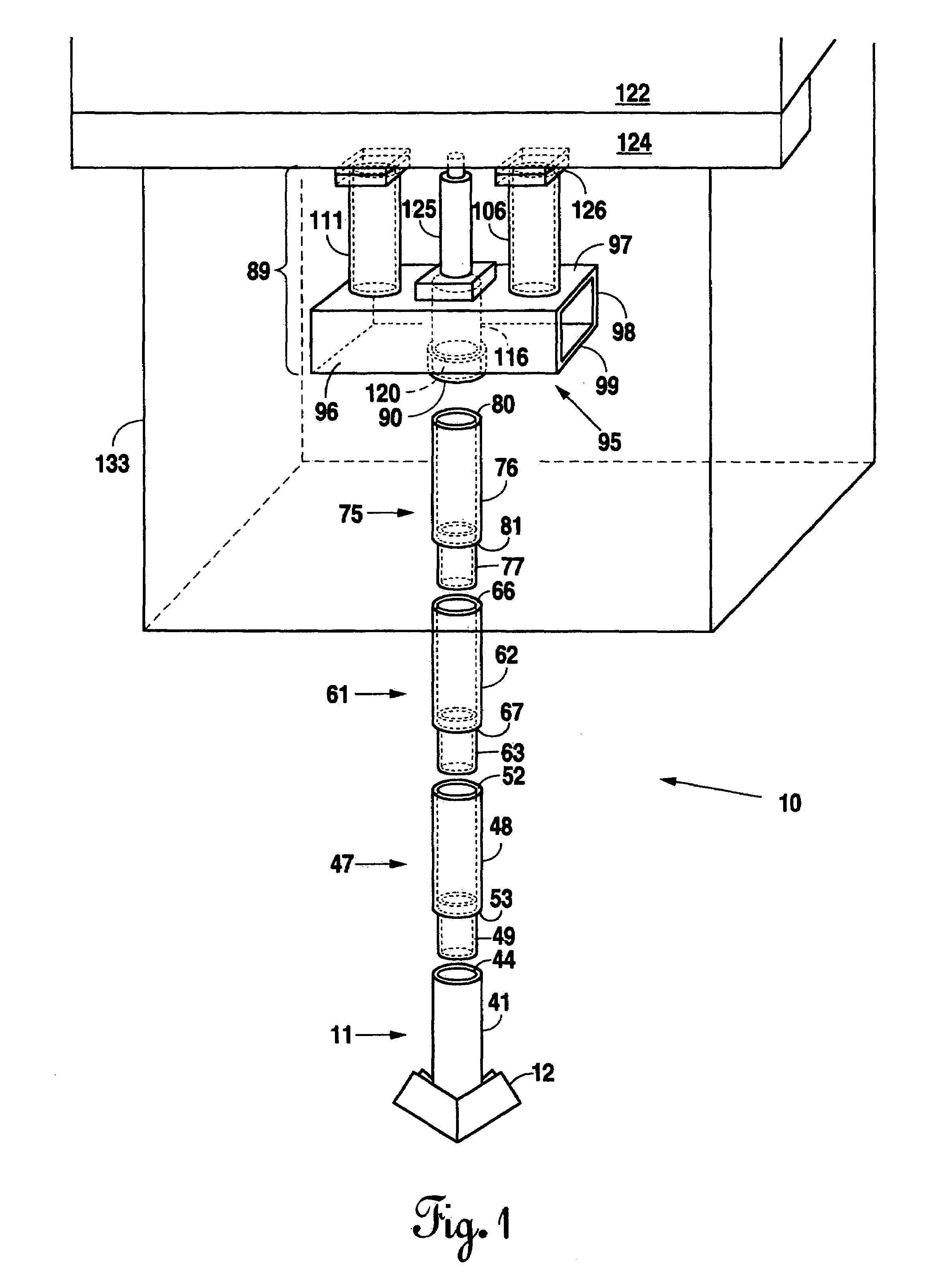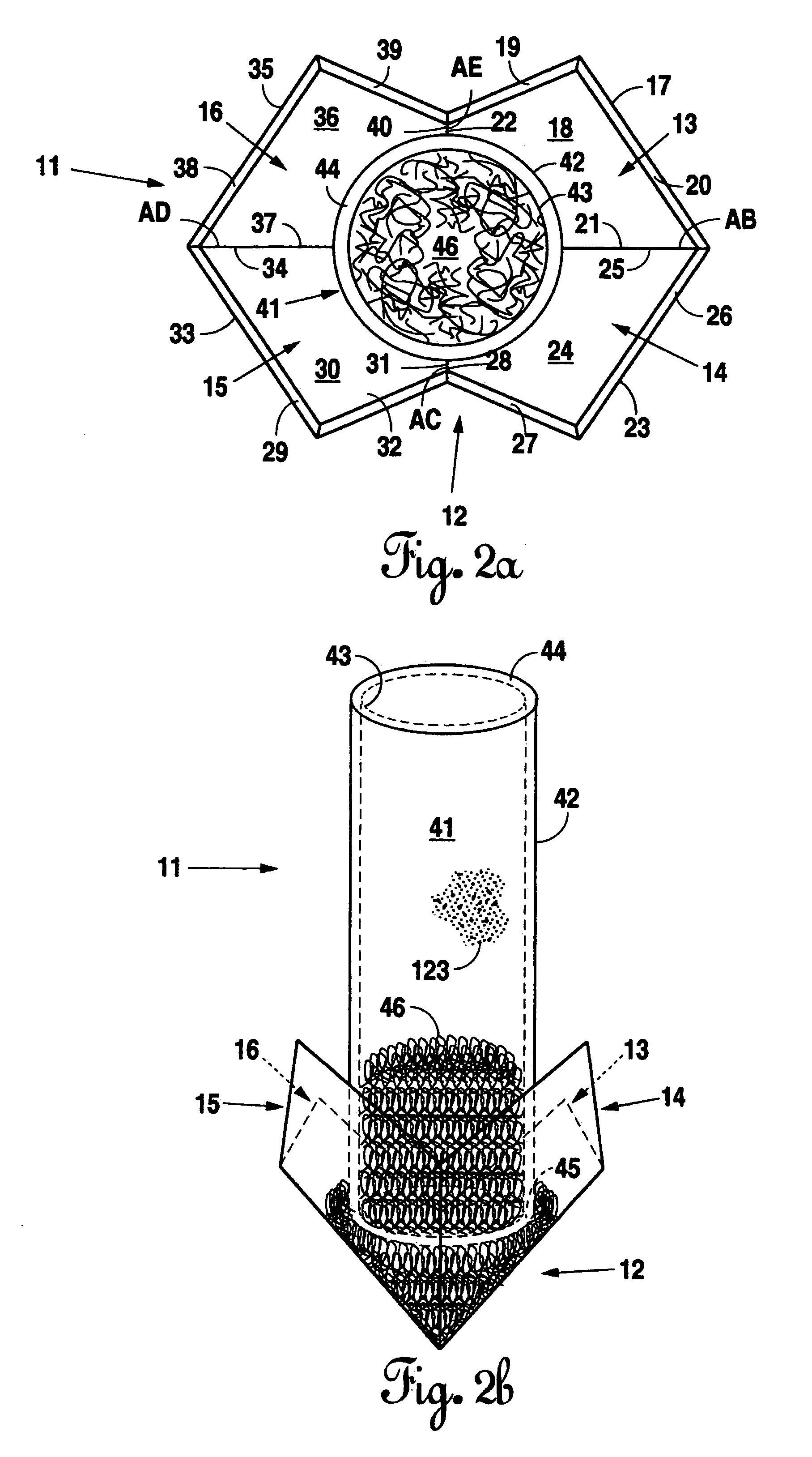Method and apparatus for raising, leveling, and supporting displaced foundation allowing for readjustment after installation
a technology for displaced foundations and foundations, applied in foundation engineering, construction, cantons, etc., can solve the problems of increased durability, reduced driving force, increased strength, etc., and achieve the effects of preventing corrosion, increasing the overall stability of the structure, and adding strength
- Summary
- Abstract
- Description
- Claims
- Application Information
AI Technical Summary
Benefits of technology
Problems solved by technology
Method used
Image
Examples
Embodiment Construction
[0032]As required, detailed embodiments of the present invention are disclosed herein; however, it is to be understood that the disclosed embodiments are merely exemplary of the invention that may be embodied in various and alternative forms. The figures are not necessarily to scale, some features may be exaggerated or minimized to show details of particular components. Therefore, specific structural and functional details disclosed herein are not to be interpreted as limiting, but merely as a basis for the claims and as a representative basis for teaching one skilled in the art to variously employ the present invention.
[0033]This invention offers a method and apparatus for raising, leveling, and supporting a foundation by placing steel piers at necessary points directly beneath the foundation beams of a slab and using a jack to level the slab beam, then allowing the leveled slab beams to rest on support from the pier. The pier is constructed from a starter segment means and steel i...
PUM
 Login to View More
Login to View More Abstract
Description
Claims
Application Information
 Login to View More
Login to View More - R&D
- Intellectual Property
- Life Sciences
- Materials
- Tech Scout
- Unparalleled Data Quality
- Higher Quality Content
- 60% Fewer Hallucinations
Browse by: Latest US Patents, China's latest patents, Technical Efficacy Thesaurus, Application Domain, Technology Topic, Popular Technical Reports.
© 2025 PatSnap. All rights reserved.Legal|Privacy policy|Modern Slavery Act Transparency Statement|Sitemap|About US| Contact US: help@patsnap.com



